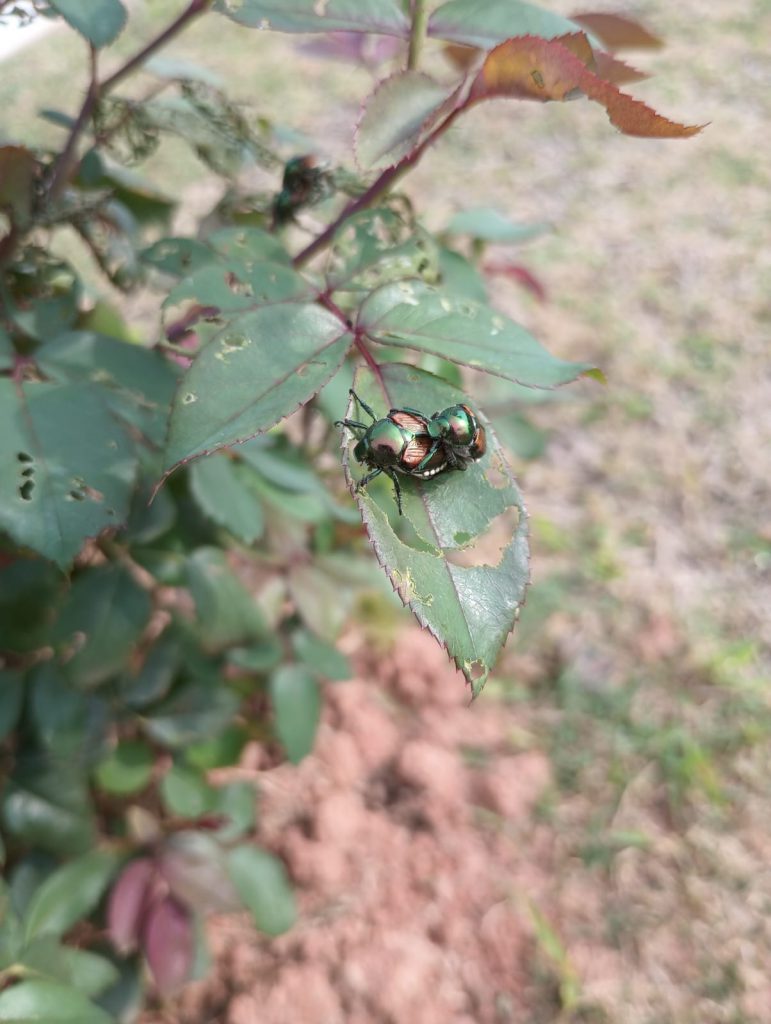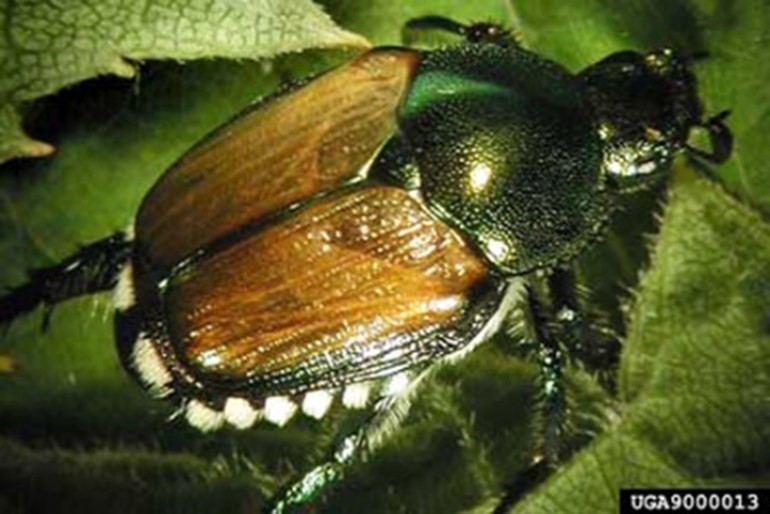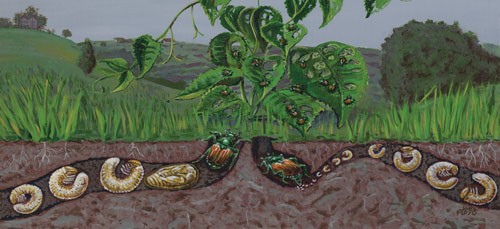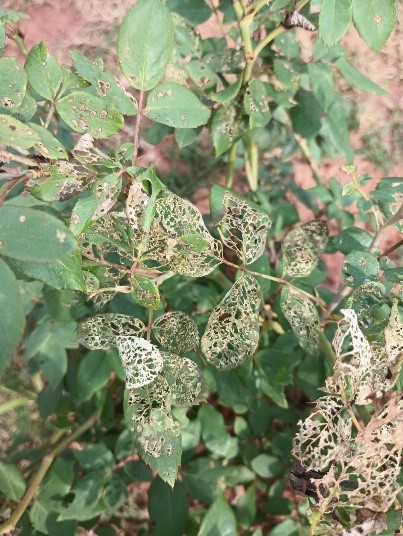
They are known for their voracious feeding habits, targeting a wide range of plants, including ornamentals, fruit trees, and vegetables. I speak of no other than the Japanese beetle (Popillia japonica) an invasive species in the United States, originating from Japan.
Though reports have been made of Japanese beetle sightings in Florida, there is still not a known established population. However, it’s important to note that the status of Japanese beetles in Florida can change, potentially rapidly, over time. Thus, it is important to be able to identify the species’ host plants and damaged caused. Early detection, monitoring, and swift action can help minimize the potential damage caused by invasive species like Japanese beetles that could potentially have negative impacts on agricultural crops, gardens, and ornamental plants.
Description
The adult Japanese beetle is an attractive pest that is generally metallic green, with bronze or copper-brown wing covers that do not completely cover the abdomen, revealing five patches of white hairs on each side and one pair on the last abdominal segment. These features distinguish Popillia japonica from all other similar looking beetles. In terms of shape, Japanese beetle generally have a broad oval body structure. Notably, the female beetles tend to be larger in size compared to their male counter parts.

Developmental stages usually take place under the soil after the female deposit her eggs. In most instances they complete their life cycle in one year emerging later in the summer months, however this varies based on locations.

Host plants
Japanese beetles have known to have over 300 host plant species; however, some common host plants include maples, soybean, ornamental apple species, plums, peaches, roses, blackberry, raspberry, limes, elms, grapes, and corn. Crepe myrtle and turfgrasses are also host plants.
Damages
Both adults and larvae cause plant damage. Adults feed on the foliage of host plants resulting in skeletonization of the leaves, while larvae feed on the root systems of turf and pasture species, affecting the ability of the plant to uptake nutrient and water from the soil.

Management
If Japanese beetle populations do become established in Florida, it is generally advisable to take measures to manage the population such as physically removing them, using pheromone traps, or other integrated pest management strategies. Chemical recommendations are not currently available in Florida since this beetle is not reported as a pest problem. However, it is always advisable to contact your Local Extension office for recommendations. The United States Department of Agriculture (USDA) has also provided some useful information on the Japanese beetle in their homeowner’s handbook titled “Managing the Japanese Beetle: A Homeowners Handbook’’.
For the most current and accurate information specific to Japanese beetles in Florida management and species identification, consult your extension office. Supporting document can also be found by clicking the link below.
Useful resources:
- EENY350/IN630: Japanese Beetle, Popillia japonica Newman (Insecta: Coleoptera: Scarabaeidae) (ufl.edu)
- JB506.indd (usda.gov))
- “Stink and Pretty”: The Pedagogy of Marigolds - May 22, 2025
- The Bold and the Beautiful in Your Landscape – Snapdragons - April 10, 2025
- Should You Be Concerned About the Grizzled Mantis? - February 27, 2025
